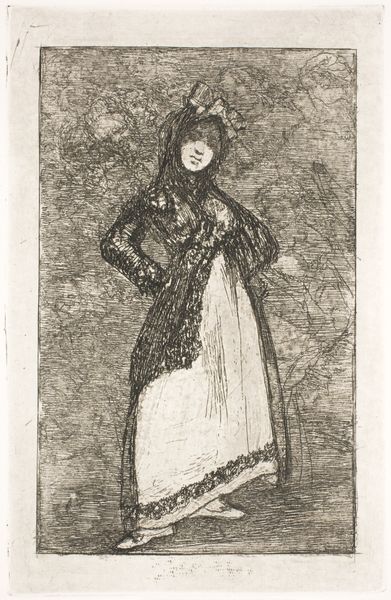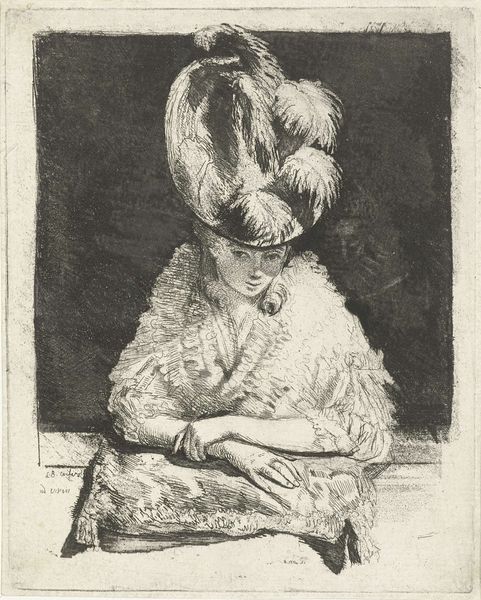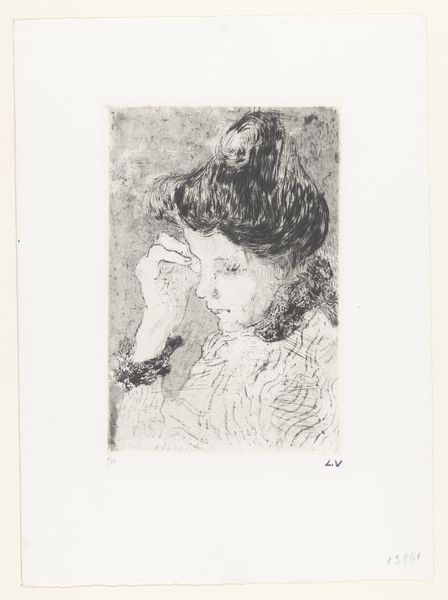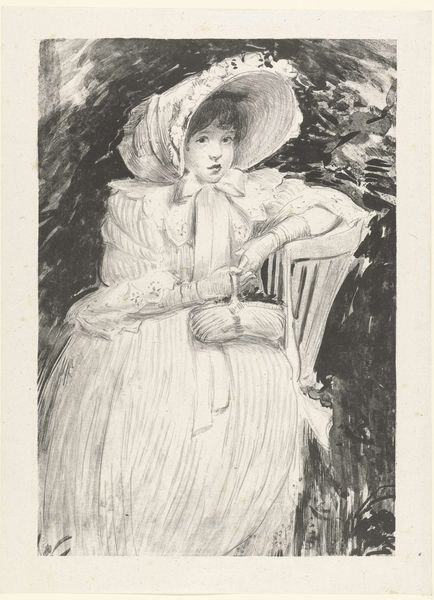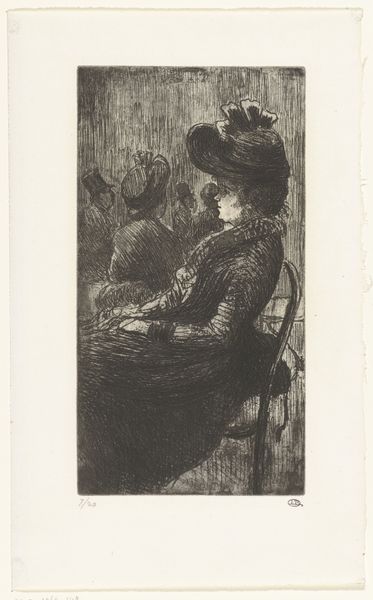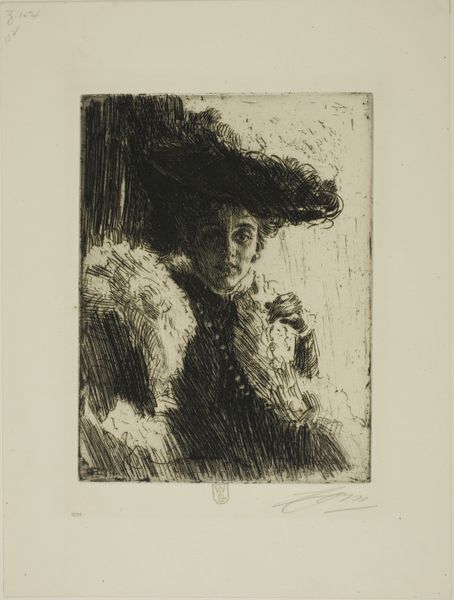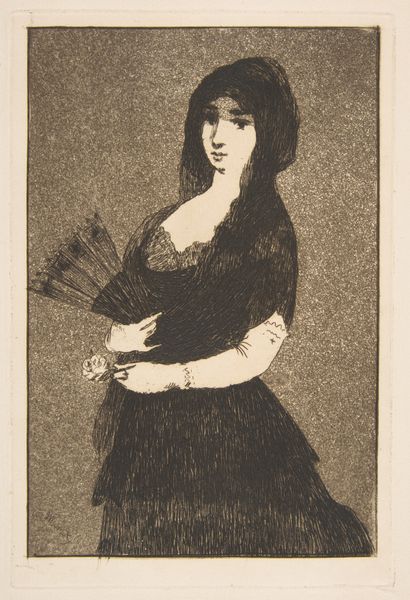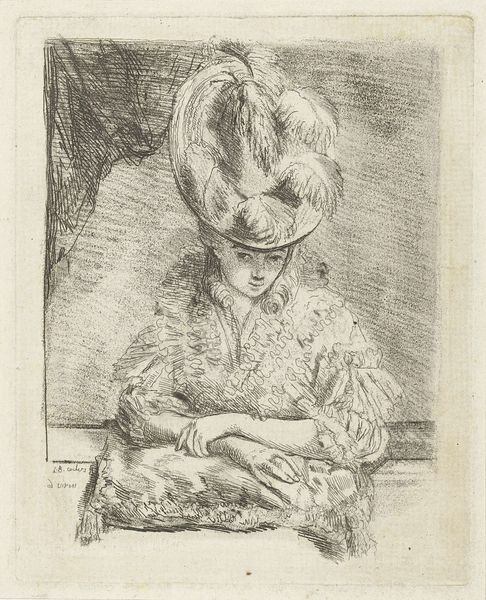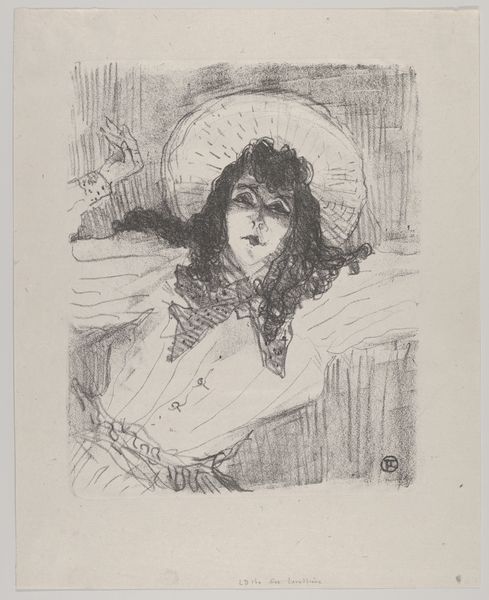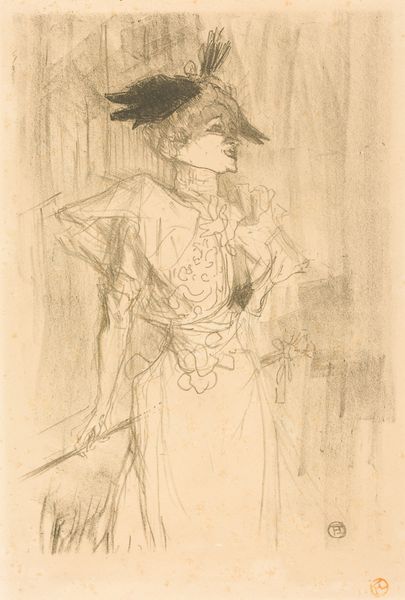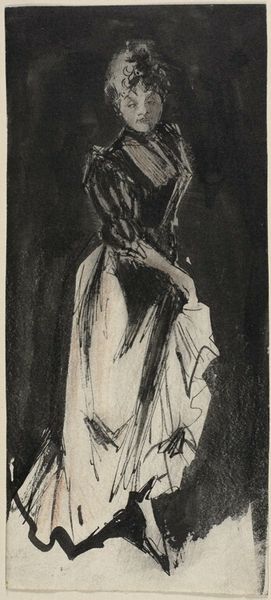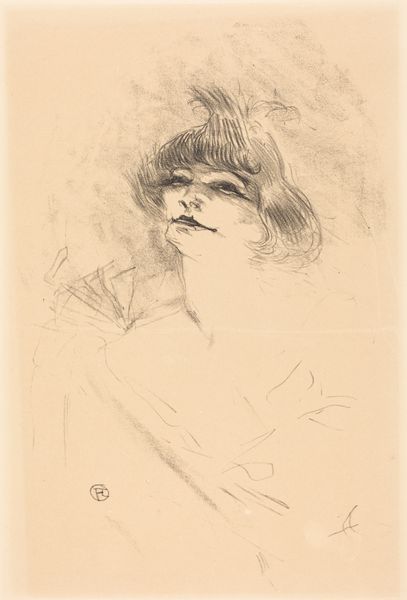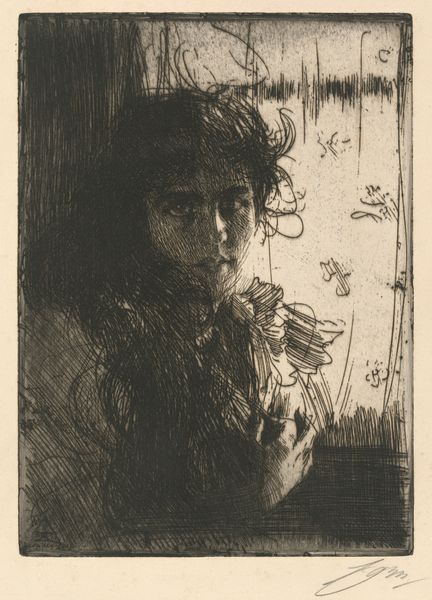
drawing, ink
#
portrait
#
drawing
#
art-nouveau
#
ink
#
symbolism
Dimensions: height 335 mm, width 235 mm
Copyright: Rijks Museum: Open Domain
Jacques-Émile Blanche created this lithograph, “Portret van Wanda Zielimska bekend als Pouponne” using a printmaking process that was gaining popularity in the late 19th century. Lithography allowed artists to create multiple original artworks from a single drawing, a commercially viable process that mirrored the rise of mass production. The lithographic crayon used here allowed the artist to sketch directly onto a stone or metal plate. This process captured the immediacy of his hand, translating the texture, weight and form of the drawing into ink on paper. Blanche uses his skills to bring the figure of Wanda Zielimska to life, her dress a stark contrast to the dark background. The subtle gradations achieved through lithography give the portrait depth and realism, far removed from traditional oil painting techniques. The soft lines and tonal variations create a sense of intimacy, typical of the portraits that Blanche was renowned for. Considering the materials, making, and social context of this print challenges traditional notions of fine art. The lithograph, a medium rooted in the industrial era, democratized art, making it more accessible to a wider audience.
Comments
No comments
Be the first to comment and join the conversation on the ultimate creative platform.
